“U.S. business portfolio in Afghanistan will continue.”..."Poppy cultivation in the Islamic Republic [of Afghanistan] increased by 37% last year [2020] alone.”
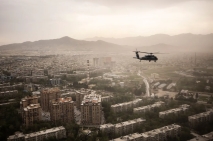 May 12, 2021, “The U.S. Is Leaving Afghanistan? Tell That to the Contractors." NY Magazine, Lynzy Billing
May 12, 2021, “The U.S. Is Leaving Afghanistan? Tell That to the Contractors." NY Magazine, Lynzy Billing
“American firms capitalize on the withdrawal, moving in with hundreds of new jobs.”
“The skies above Kabul have been abuzz over the past week with massive cargo planes flying out equipment amid the U.S. withdrawal from Afghanistan. Some are flying out of Bagram Air Base, a monster American stronghold once home to 40,000 military personnel and civilian contractors at the peak of the war here. Today, there are 3,300 U.S. troops in the entire country, who, like their NATO colleagues, are all scheduled to leave by the 20th anniversary of the 9/11 attacks.
Yet contractors who make up America’s largest force in Afghanistan are beefing up their presence just in time to plug the vacuum that will be left behind.
“So far, nothing is changing,” said a contractor working for a U.S. company based in Bagram. News from the Pentagon has yet to trickle down. “I am not aware of any changes to my job or of any contracts being passed to the Afghan government. These are American companies and these contracts will remain under private payroll.”…
Contractors are a force both the U.S. and Afghan governments have become reliant on, and contracts in the country are big business for the U.S. Since 2002, the Pentagon has spent $107.9 billion on contracted services in Afghanistan, according to a Bloomberg Government analysis. The Department of Defense currently employs more than 16,000 contractors in Afghanistan, of whom 6,147 are U.S. citizens–more than double the remaining U.S. troops.
General Kenneth McKenzie, the head of U.S. Central Command, has said contractors will come out as the U.S. military does, but many do not work for the military to begin with rather, for other departments and a string of private entities. For instance, both the U.S. Agency for International Development and the State Department are retaining contractors for ongoing programs outside Kabul, despite the withdrawal. “McKenzie was talking about U.S. contractors on DoD contracts but not necessarily the other agencies or other nationalities,” says another contractor at Bagram. “There are a lot of ‘if’s and potential exceptions in that line from him.”
But as some Americans leave, others are also arriving at Bagram, which senior Afghan military officials have confirmed will be the remaining hub for contractors. In April [2021], 70 American security and defense firms started advertising more than 100 new security and intelligence positions, some with year contracts that go beyond September 11, 2021.
One such company is Triple Canopy, which is owned by Constellis, a company that also owns Academi, the most recent iteration of Erik Prince’s notorious Blackwater private-military contractors. Triple Canopy is hiring armed guards at Bagram to provide security for remaining U.S. personnel at four sites across the country. Raytheon Technologies is posting for logistics and intelligence analyst positions in Bagram. CACI and BAE Systems both posted jobs for signals intelligence specialists for an estimated term of 12 months. SOSi posted openings for intelligence analysts for yearlong deployments, where “the work environment could require 100 percent of time spent outdoors.” PAE, Inc., who scored nearly a billion dollars’ worth of contracts with the Pentagon over four years, is hiring for a contract for the State Department. Fluor Corporation is hiring for technicians, working for both the U.S. and the private sector. Louis Berger, who built and maintains the country’s largest power plant, inside Bagram, is posting more than 20 new positions at the base.”…
[More on Louis Berger: 11/15/2010, “U.S. contractor [Louis Berger] accused of fraud still winning big Afghan projects,“ McClatchy, Taylor and Strobel: “On July 31, 2006, an employee of the Louis Berger Group, a contractor handling some of the most important U.S. rebuilding projects in Afghanistan, handed federal investigators explosive evidence that the company was intentionally and systematically overbilling American taxpayers. Neither the whistleblower’s computer disk full of incriminating documents nor a trail of allegations of waste, fraud and shoddy construction, however, prevented Louis Berger from continuing to reap hundreds of millions of dollars in federal contracts.”…11/5/2010, “[Louis Berger Group] A New Jersey-based construction and engineering company has been hit with the largest fines ever imposed on a contractor working in the war zones of Iraq and Afghanistan, after a whistle-blower revealed that the company had been overbilling the government. The company, the Louis Berger Group, based in Morristown, N.J., will pay $18.7 million in criminal penalties and $50.6 million in civil penalties for overbilling the United States Agency for International Development for work in Afghanistan, Iraq and Sudan. As part of the civil agreement, the company will pay $14.2 million of the civil penalty in the next 30 days and the balance over the next four years. In addition, two former company officials, Salvatore Pepe, 58, of Tuckahoe, N.Y., the former chief financial officer, and Precy Pellettieri, 54, of Rahway, N.J., the former controller, pleaded guilty on Friday to defrauding the government.”...“War Reconstruction Fraud Draws Big Fines,” NY Times, James Risen…7/17/2015, “New Jersey company [Louis Berger] to pay $17.1 million fine to settle bribery charges,” Reuters, “Louis Berger International Inc, a New-Jersey-based construction management company, will pay a $17.1 million criminal fine to resolve charges that it bribed officials to win government contracts abroad, the U.S. Justice Department said on Friday. Two former executives also pleaded guilty to charges brought under the Foreign and Corrupt Practices Act, the department said….The company and its employees bribed officials in India, Indonesia, Vietnam and Kuwait between 1998 and 2010 to obtain government construction management contracts.”]
(continuing): ““U.S. technical teams will continue to help Afghan forces in some sections beyond September 11, some from Bagram,” said a contractor with knowledge of the new jobs. The contractor has worked for a private agency at Bagram for 15 years and renewed his contract for three years in mid-April [2021]. Other contractors, he said, will be based outside the country “but visit from time to time,” in line with the Pentagon’s plans for “over-the-horizon” counterterrorism missions. Either way, he said,
the “U.S. business portfolio in Afghanistan will continue.”
Post-withdrawal, the biggest issue will be force protection. The U.S. Embassy is most likely to house remaining CIA personnel and contractors, who could face security risks such as kidnapping. The Embassy will retain a modest military presence, as is standard, but contractors would probably rely on U.S. contractors for security. “Many international firms are likely to be leery of entrusting Afghan security forces without supplementary measures of their own,” said Andrew Watkins, senior analyst on Afghanistan for the International Crisis Group.
Like CIA personnel, contractors can be untraceable, and by design, they exist uncounted while they support the military with logistical roles such as transportation. Some have murkier roles in the shadowy world of proxy dark ops and mercenaries. Others help operate the billion-dollars’ worth of U.S. equipment and heavy weaponry within the Afghan military: Contractors provide all of the maintenance for the Afghan Air Force’s U.S.–made Black Hawk helicopters and C-130 cargo planes. The air traffic controllers at the country’s airports are international contractors, said Watkins, with no organic local labor pool of Afghans trained up for the job to draw from.
“So many contracts extend beyond the withdrawal deadline and between what U.S. officials say and what the immense needs are on the ground, something doesn’t add up and something’s got to give,” said Michael Kugelman, deputy director of the Asia Program and senior associate at The Wilson Center. “Hence the likelihood that the contractor footprint will remain entrenched, to some degree.”
That demand could be filled by the billion-dollar industry of private military contractors, since they don’t count as “boots on the ground” but offer the same level and range of skills— all at a much lower political cost and with a dose of secrecy. The lines that differentiate such contractors from mercenaries are blurry: While private military contractors are considered legal, mercenaries are banned by international and U.S. laws, something which caused trouble for Prince when he was found to be training and constituting private armies in Iraq and Libya, and who had plans to privatize the war in Afghanistan.
“This is really sensitive territory, and these folks will need to carry out a very delicate dance with their activities to avoid running afoul of the law,” said Kugelman. “The administration wants to draw down and move on to other things, with any remaining security presence largely kept out of the public eye. The last thing it wants is another contractor controversy and will need to be very careful in all decisions about how to handle remaining contractors post-September.” It’s possible that some contracts could face early termination, but that could entail large penalties or legal hurdles for amending or breaking them.
Beyond maintaining the airports and bases, equipment and planes, both the military and contractors rely on a force of Afghan contractors and locals for labor, such as cooks, laundry staff, drivers, and translators — staff who will face the largest financial hit from the withdrawal. At the war’s height, it was estimated that more than 12,000 Afghans worked at Bagram. Today, about 1,700 remain. “After four years as a translator, I am worried I will be let go. All of us are worried. We saw this happen before and in what felt like a day, hundreds of us walked out of the bases for the last time,” says an Afghan contractor working at Bagram. “I was lucky, but I am not betting on keeping my job this time. I might have already seen my last paycheck. We are all preparing for the worst.”
Many U.S. contractors…are ready to get out. “If they offered me an early termination on my contract, I’d take it,” said a contractor at Bagram.…For those still at Bagram, the U.S. war isn’t ending with a U.S. military exit just yet, and for the newcomers about to step foot in Bagram, a new, important, and perhaps more covert mission is about to begin.”
Top image, “Photo: Florian Gaertner/Photothek via Getty Images”
“Correction, 5/13/21: A previous version of this article said Fluor Corporation is hiring armed guards and intelligence analysts for Afghanistan.”
……………………………………………………….
Added: “Poppy cultivation in the Islamic Republic [of Afghanistan] increased by 37% last year [2020] alone.”…Afghanistan “accounts for more than 90% of global opium production....America’s empire-building has been the pouring of fuel on the fire…by turning Afghanistan into a multi-billion dollar narco-economy whereby heroin is circulated for consumption all over the map.”
8/26/21, “The War in Afghanistan: The real ‘Crime of the Century’ behind the Opioid Crisis,” Max Parry, Off Guardian
“Everywhere US interventionism goes, the drug market seems to follow.”
“[Off Guardian Editor’s Note – This article was written and submitted to us before the Taliban’s take-over of Kabul.”]
“In May [2021] , the HBO television network aired a new two-part documentary exploring America’s ongoing opioid epidemic entitled The Crime of the Century. The first episode summarized the role of the pharmaceutical industry in the crisis, specifically that of Sackler family drugmaker Purdue Pharma and its deadly prescription painkiller, OxyContin.
Part one also thoroughly investigates the complicity of the Food and Drug Administration (FDA) in the deceptive marketing by the drug company to obtain US government approval for oxycodone despite its high risk of abuse and dependency, just as the pharmaceutical lobby bribes lawmakers in Washington. Later, the second half of the series charts the current rising use of even more powerful synthetic opioids like fentanyl.
During COVID-19, the number of fatal overdoses have reportedly spiked in an epidemic already estimated to be taking nearly 50,000 lives per year. The HBO production is one of a slew of recent films such as Netflix’s The Pharmacist and The Young Turks’ The Oxy Kingpins which highlight the responsibility of the pharmaceutical industry but omit discussion of a related issue that has become taboo for media to even mention.
While the film’s scathing indictment of Big Pharma is certainly relevant, it unfortunately neglects to address another enormous but lesser-known factor in America’s escalating drug problem.
Corporate media would have us believe it is simply fortuitous that during the exact time opioid overdose deaths in the US began to increase in the early 2000s, the so-called War on Terror began with the conquest and plundering of a country abroad that has since become the world’s epicenter for opium production.
By the end of August [2021], American combat forces are scheduled to fully withdraw from Afghanistan shortly before the twentieth anniversary of the 9/11 attacks that preceded the October 2001 invasion and subsequent two-decade occupation.
Contrary to the spin put on the announcement by the Biden administration, the pledge to finally remove troops from the longest war in US history was actually yet another postponement, as the Trump administration had previously agreed with the Taliban to a complete drawdown by May.
Time will tell whether the new deadline is Washington kicking the can down the road again in the endless war, but the withdrawal has already drawn criticism from the bipartisan foreign policy establishment with former Secretaries of State Hillary Clinton and Condoleezza Rice voicing their objections to the House Foreign Affairs Committee.
Unfortunately for the Beltway chickenhawks, polls show an increasingly war-weary American public are unanimously in support of the move, which is little wonder given they have endured a silent epidemic that can be partly traced back to the conflict-ridden nation.
Even though the FDA approved OxyContin six years before the US took control of the South Central Asian country, an increase in domestic heroin overdoses has been intertwined with the uptick in abuse of commonly prescribed and man-made opioids which have become gateway drugs to the morphium-derived opiate in the new millennium.
Meanwhile, Afghanistan has become the globe’s leading narco-state under NATO occupation which accounts for more than 90% of global opium production that is used to make heroin and other narcotics.
According to the United Nations Office on Drugs and Crime (UNODC), poppy cultivation in the Islamic Republic [of Afghanistan] increased by 37% last year [2020] alone. At the same time, the Center for Disease Control and Prevention (CDC) reports that heroin use in the US more than doubled among young adults in the last ten years, while 45% of heroin users were said to be hooked on prescription opioid painkillers as well.
Yet the impression one gets from mainstream media is that the vast majority of smack on America’s streets is coming solely from Mexican cartels, a statistical impossibility based on the scale of the US user demand in proportion to the amount of hectares produced in Latin America, when the majority is inevitably being sourced from a country its own military has colonized for two decades.
The predominant narrative is that the illegal trade is the Taliban’s primary source of income financing its insurgency which has put the Pashtun-based group in nearly as strong a position today as it was prior to its overthrow when it presided over three-quarters of the country.
While the newly rebranded movement’s bloody and intolerant history cannot be whitewashed, one would have no idea that the lowest period in the previous thirty years for Afghan opium growth was actually under the five-year reign of the Islamists who strictly forbid poppy farming a year before the US takeover, though it is claimed they were merely deceiving the international community.
Nevertheless, where opium harvesting really flourished preceding the NATO invasion was under the borderlands controlled by the Northern Alliance, the same coalition of warlords and tribes later armed by the CIA to oust the Taliban, while United Nations observers even acknowledged the success of the Sharia-based ban until its ouster.
Beginning in 2001, Afghanistan was instantly transformed into the chief global heroin supplier entering Turkey through the Balkans into the European Union and via Tajikistan eastward into Russia, China and beyond. In the midst of the US exit, there is a general agreement that the days are numbered for the Kabul government as the Taliban continue to make gains.
Still, the question remains — if the self-described Islamic Emirate and its asymmetric warfare is to blame for the opium boom, then where on earth did the billions NATO allocated for its counternarcotics strategy go? Even in the rare instances when major news outlets have reported on the US military’s non-intervention policy toward opium farming with American marines suspiciously under orders to turn a blind eye to the poppy fields, the yellow press simply refuses to connect the dots.
Under the smokescreen of supposedly protecting the only means of subsistence for the impoverished locals, NATO forces are in reality safeguarding the lethal product lining the pockets of the Afghan government. Why else would the Western coalition continue to overlook the Taliban’s main source of revenue if it is only the Pashtun nationalists who profit?
US Marines are now tasked with guarding the opium crops. As always Geraldo puts a spin on the story that it’s really bad but has to be done. Who makes the money off of this opium? Is it the farmers making all the money from these crops? Doubt it. This is nothing more than war-for-profit and they shove it in your face.
In reality, it was under the initial post-Taliban regime of President Hamid Karzai where drug exports began to surge as the very regime installed by the Bush administration shielded the unlawful trade from its cosmetic prohibition effort. Even though voter fraud was rampant during both the 2004 and 2009 Afghan elections, Karzai was championed as the country’s first “democratically-elected” leader while receiving tens of millions in behind the scenes payments from the Central Intelligence Agency.
A longtime Western asset, Karzai had previously raised funds in neighboring Pakistan for the anti-communist mujahideen during the Afghan-Soviet War in the 1980s. Not only did the ranks of the Islamic ‘holy warriors’ armed and funded in the CIA’s Operation Cyclone program include Karzai and the eventual core of both the Taliban and Al-Qaeda — including Osama bin Laden himself — but it is also well established the jihadists were deeply immersed in drug smuggling as the US looked the other way.
The late, great historian William Blum wrote:
“CIA-supported mujahideen rebels engaged heavily in drug trafficking while fighting the Soviet-supported government, which had plans to reform Afghan society. The Agency’s principal client was Gulbuddin Hekmatyar, one of the leading drug lords and the biggest heroin refiner, who was also the largest recipient of CIA military support. CIA-supplied trucks and mules that had carried arms into Afghanistan were used to transport opium to laboratories along the Afghan-Pakistan border. The output provided up to one-half of the heroin used annually in the United States and three-quarters of that used in Western Europe. US officials admitted in 1990 that they had failed to investigate or take action against the drug operation because of a desire not to offend their Pakistani and Afghan allies. In 1993, an official of the DEA dubbed Afghanistan the new Colombia of the drug world.”
As maintained by the UNODC, the heroin flooding out of Afghanistan and Central Asia into Western Europe passes through the Balkan route consisting of the independent ex-Yugoslav states, together with Albania and the partially-recognized protectorate of Kosovo.
Not coincidentally, this transit corridor largely began to swell with narcotraffic proceeding the NATO war on Yugoslavia in the 1990s, especially in the wake of the Kosovo conflict which saw
the Clinton administration shore up the Al Qaeda-linked Kosovo Liberation Army (KLA) to secede the disputed province from Serbia.
Even with their previous State Department designation as a terrorist organization until 1998, the Islamist militants were given an instant facelift as freedom fighters.
Apart from the fact that the ethnic Albanian separatists had considerable ties to Salafist extremist networks, the CIA-backed Kosovar insurgents also subsidized their military campaign, which involved serious war crimes and ethnic cleansing, through narcoterrorism and drug-running with Albanian crime syndicates--in above all, heroin.
As journalist Diana Johnstone writes in Fools’ Crusade: Yugoslavia, NATO and Western Delusions:
“The US Drug Enforcement Administration and other Western agencies were well aware of the close links between the UCK/KLA and the Kosovo Albanian drug traffickers controlling the main flow of heroin into Western Europe from Afghanistan via Turkey. The CIA has a long record of considering such groups as assets against governments targeted by the United States, whether in Southeast Asia, Africa or Central America.”
Shortly after the Red Army retreated in 1989, Afghanistan became one of the world’s top opium producers for the first time throughout the next decade until Taliban Supreme Leader Mullah Omar issued a fatwa against the lucrative crop in 2000. When the comprador Karzai assumed office the very next year, another family figure emerged as a key coalition ally in the country’s south — younger half-brother Ahmed Wali Karzai — who was appointed to govern poppy-rich Kandahar Province until his assassination in 2011.
Just a year earlier, it was revealed by WikiLeaks embassy cables that Washington was well aware the younger Karzai was a corrupt drug lord, not long after The New York Times divulged his key role in the opium trade while simultaneously on the CIA payroll.
Even though this partial hangout was publicized by the Old Gray Lady, the newspaper of record never bothered to further investigate the links between Langley and the Karzai family’s deep pockets from the drug market. Instead, they continued to craft the misleading perception that taxes on poppy farming within Taliban-held areas was chiefly responsible for the illegal industry dominating the Afghan economy and fueling
the never-ending war that Washington has a vested interest in prolonging.
Many commentators have drawn parallels between the recent disorganized abandonment of Bagram Airfield, the largest US base in Afghanistan, and the final evacuation of American combat troops from South Vietnam in 1973. The mountainous country situated at the intersection of Central and South Asia along with Pakistan and (to a lesser extent) Iran comprises what is known as
the ‘Golden Crescent’, one of two main hubs of opium turnout on the continent.
In the Vietnam era, most of the globe’s heroin came from the other major axis of poppy-plant growth in the ‘Golden Triangle’ of Southeast Asia located at the border junction between Thailand, Laos and Myanmar.
This crossroads continued to be the largest region for harvesting of the flower until the early 21st century when Afghanistan surpassed it in outturn. While there has yet to be revealed a smoking gun per se implicating the CIA in drug trafficking from the Golden Crescent, it is at the very least food for thought given the precedent set by the agency throughout its 73-year history.
From the beginning of the Cold War, Langley intimately conspired with organized crime to achieve US foreign policy objectives. Following the Cuban Revolution in 1959, the rogue spy agency frequently enlisted the Mafia in its many failed attempts to overthrow Fidel Castro and decades later many still believe that the same elements likely had a hand in the assassination of John F. Kennedy.
Still, it was not until 1972 during the Vietnam War when historian Alfred W. McCoy famously uncovered the extent to which the CIA was involved in the international drug trade in The Politics of Heroin in Southeast Asia. The explosive study meticulously documented how the narcotics coming out of the Golden Triangle were being transported on a front airline known as Air America run by US intelligence as part of its covert operations in bordering Laos.
In the Laotian civil war, the CIA had secretly organized a guerrilla army of 30,000 strong from the indigenous Hmong population to fight the communist Pathet Lao forces aligned with North Vietnam and the highland natives were economically dependent on poppy cultivation. When the heroin exported out of Laos didn’t find its way to cities in America, it ended up next-door in Vietnam where opiate habits among GIs reached epidemic proportions, one of many instances of ‘blowback’ from US collusion with worldwide drug smuggling.
Believe it or not, however, this was not the first correlation between an American war and an opiate epidemic at home, as previously during the Civil War in the 1870s there was widespread morphine addiction among Union and Confederate soldiers.
It appears that almost everywhere US interventionism goes, the drug market seems to follow.
In the early 1980s, the CIA mobilized another counter-revolutionary fighting force in Central America as part of the Reagan administration’s dirty war against the left-wing Sandinista government in Nicaragua. During the Nicaraguan civil war, Congress had forbidden any funding or supplying of weapons to the right-wing Contras as stipulated in the Boland Amendment.
Instead, Washington used go-betweens like Panamanian dictator Manuel Noriega, a long-standing CIA operative closely linked to narco-trafficking through Pablo Escobar’s Medellín Cartel, until the US later turned against the strongman.
In what became known as the Iran-Contra affair, the Reagan White House was embroiled in scandal after it was divulged that the CIA had devised a rat line funneling arms to a most unlikely source in the Islamic Republic of Iran — a sworn enemy of the US under embargo — by which the takings were diverted to the Nicaraguan terrorists.
Although the official excuse for the secret deal was an arms-for-hostages exchange for US citizens being held in Lebanon, the real purpose for the arrangement was to finance the Contras whose other proceeds happened to come from a different illicit enterprise — cocaine.
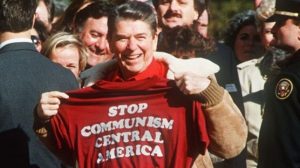 Despite the fact that a 1986 inquiry by the Senate Foreign Relations Committee found that the [CIA] agency knew the anti-Sandinista rebels were engaged in cocaine trafficking just as use of its highly-addictive freebase variation was surging in cities across America, it was not until a decade later when investigative journalist Gary Webb in his controversial Dark Alliance series fully exposed the link between Contra drug operations under CIA protection and the crack epidemic domestically.
Despite the fact that a 1986 inquiry by the Senate Foreign Relations Committee found that the [CIA] agency knew the anti-Sandinista rebels were engaged in cocaine trafficking just as use of its highly-addictive freebase variation was surging in cities across America, it was not until a decade later when investigative journalist Gary Webb in his controversial Dark Alliance series fully exposed the link between Contra drug operations under CIA protection and the crack epidemic domestically.
Public outcry over the three-part investigation resonated most strongly within the African-American community whose inner-city neighborhoods were devastated by the crack explosion and the indignation culminated in a Los Angeles town hall where a large audience confronted CIA Director John Deutch.
Amid the fallout, Webb found himself the target of a media-led smear campaign disputing the credibility of the exposé which destroyed his life and derailed his career, even though his findings were based on extensive court documents and corroborated by former crack kingpins like “Freeway” Rick Ross and ex-LAPD narcotics officer Michael C. Ruppert.
Sadly, the journalist would later die of a highly suspicious “suicide” in 2004 but eventually Webb’s muckraking was the subject of a favorable Hollywood depiction in 2014’s Kill The Messenger. In the end, the fearless reporter was punished for revealing that many of the individuals most involved in cocaine trafficking in the eighties were the same exact individuals the CIA employed to channel guns to the Contras, thereby permitting drugs to flow into the US.
Although there has yet to be the equivalent of a Vietnam or Nicaragua-level disclosure of incontrovertible evidence incriminating Uncle Sam in the Afghan drug business as the troop removal approaches, the answer may lie with
who is set to replace them.
A Defense Department report from earlier this year indicates that at least 18,000 security contractors remain in the war-torn country, where outsourcing to private military companies like Academi (formerly Blackwater) has increasingly been relied upon in the 20-year war, including for futile drug enforcement measures.
As the services of guns-for-hire with a penchant for human rights abuses grew in the lengthy conflict, oversight and accountability diminished to the point where the Pentagon is unable to accurately keep track of defense firms or what mercenaries are even doing in the country. Meanwhile, private security services have made a fortune being contracted out for the abortive anti-drug effort just as Afghanistan set records in opiate production.
Alfred W. McCoy, the acclaimed historian who unearthed CIA collaboration with opiate trafficking in Indochina, not long ago chronicled the imminent downfall of the US as a superpower in In the Shadows of American History: The Rise and Decline of US Global Power.
In his work, McCoy notes how the US has set out to fulfill the “Heartland Theory” geostrategy envisioned by the architect of modern geopolitics, Sir Halford Mackinder, in his influential 1904 paper “The Geographical Pivot of History.” The English analyst reconceived the continents as poles of interconnected global power and cited the way in which the British Empire joined with the other Western European nations in the 19th century to prevent Russian imperial expansionism in “The Great Game” with Afghanistan serving as a battleground.
Fearing that the Russian Empire would enlarge toward the south, the British sent forces to Afghanistan as a containment strategy, a decision which ultimately proved to be a humiliating defeat for the East India Company but according to Mackinder blocked the Russian sphere of influence in British India. He then theorized that the country which conquered the Eurasian ‘Heartland’ of the Russian core would come to dominate the world.
For the strategist, the geographical notion of Eurasia also consisted of China which the British had used drug addiction to destabilize and overcome in the Opium Wars.
In 1979, the National Security Adviser in the Jimmy Carter administration, Zbigniew Brzezinski, put Mackinder’s blueprint into practice after the US was forced to pull back in Vietnam by luring the Soviet Union into its own impregnable quagmire in a new “Great Game.”
The scheme worked like a charm and just months after the Polish-born Russophobe persuaded the 39th president to lend clandestine support to the mujahideen in Afghanistan, aid from Moscow was requested by the socialist government in Kabul and the rest was history.
Like the British Empire and Alexander the Great before it, the US is itself now bogged down in the ‘graveyard of empires’ after the forgetting the lessons of history. Unintended or not, one of the adverse results of America’s empire-building has been the pouring of fuel on the fire of an initially homegrown opioid crisis begun by Big Pharma by turning Afghanistan into a multi-billion dollar narco-economy whereby heroin is circulated for consumption all over the map.
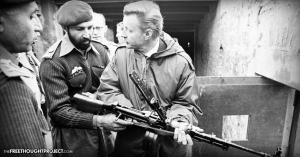 Like the Pentagon Papers released during the Vietnam War, the internal memos of the Afghanistan Papers made public in 2019 proved officials were deceiving the American people about the reality
of the no-win situation on the ground. It remains to be seen what
impact the US handover to the corrupt Kabul regime will have for dope
distribution as a Taliban seizure of power appears near, but the latest report by the Special Inspector General for Afghanistan Reconstruction (SIGAR) determined that officials have long known the war was ill-fated from the outset and warns Washington is bound to repeat the same errors in the future.
Like the Pentagon Papers released during the Vietnam War, the internal memos of the Afghanistan Papers made public in 2019 proved officials were deceiving the American people about the reality
of the no-win situation on the ground. It remains to be seen what
impact the US handover to the corrupt Kabul regime will have for dope
distribution as a Taliban seizure of power appears near, but the latest report by the Special Inspector General for Afghanistan Reconstruction (SIGAR) determined that officials have long known the war was ill-fated from the outset and warns Washington is bound to repeat the same errors in the future.
Unless critical steps are taken to rein in the military-industrial complex, we have to assume that with another forever war there will unavoidably come the opening of another CIA-controlled international drug route with Americans either suffering the consequences with their pocketbooks or their lives.”
“Max Parry is an independent journalist and geopolitical analyst. His writing has appeared widely in alternative media. Max may be reached at maxrparry@live.com”
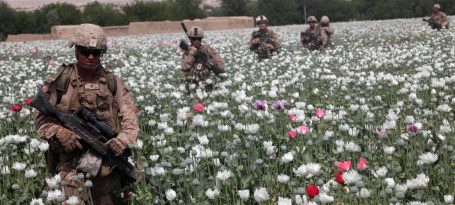
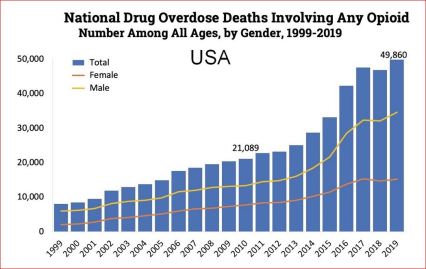
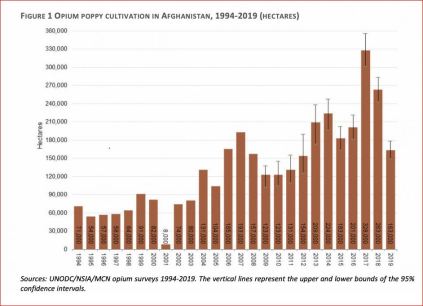

No comments:
Post a Comment